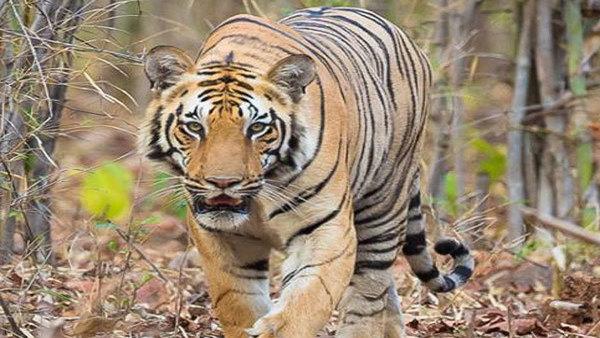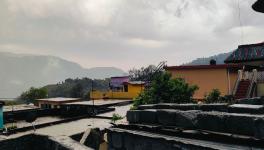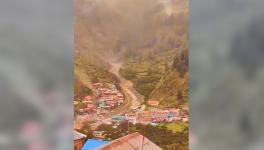Supreme Court Stays Bus Service through Corbett Tiger Reserve

Representational Image. Image Courtesy: Oneindia
On Thursday the Supreme Court issued a stay on the plying of private buses inside the Corbett Tiger Reserve (CTR). The court also issued notices to the Ministry of Environment and Forest and Climate Change (MOEFCC), National Board of Wildlife, National Tiger Conservation Authority (NTCA), the state of Uttarakhand state, the Chief Wildlife Warden (CWLW) of the state and director CTR on allowing buses inside the core area of the tiger reserve.
The court issued the stay based on a petition filed by wildlife activist and lawyer Gaurav Kumar Bansal. It stated that the decision by CTR’s director was not only against various provisions of the Wildlife Protection Act, 1972, but also against previous orders of the apex court to protect the tigers and other wildlife.
Notably, on December 18, 2020, the forest minister of the state Harak Singh Rawat made the announcement about the launch of the said bus service. The total length of the stretch known as kandi road is 84 kms. The current alignment connects Ramnagar to Kotdwar via Dhela – Laldhang – Kothirau – Dhara –Khatpani – Kalagarh – Nalkhatta – Morghati –Dholkhand – Pakhro – Saneh. The stretch where the permission for a bus service was facilitated includes 24 kms of buffer zone between Ramnagar and Kaharagate, 21 kms of core breeding area and 32 kms of a buffer zone of the CTR between Kalagarh and Pakhro.
It is not for the first time that the state’s forest minister has taken such a step to reduce travel time between the Kumaon and Garhwal divisions of the hill state to appease voters from his constituency. Earlier too he got a Rs 2,000 crore road project from Kotdwar to Ramnagar approved which passed through the core area of CTR as well.
The project was aimed at reducing the distance between both divisions by around 83 kms but was stayed by National Green Tribunal based on a petition by Bansal two years ago. It was brought to the notice of the tribunal that the Uttarakhand government was not following a Supreme Court order from 2005 where the apex court had approved a road map for the same stretch which had been prepared by officials after a joint survey. The road did not require to pass through the CTR.
The NTCA had submitted its affidavit before the NGT in that case citing the Wildlife Protection Act stipulating that the stretch where the road was to be built violates the area and hence no construction activity could take place there.
Earlier, wildlife activists had sent letters to the MOEFCC, National NTCA, and the Prime Minister’s Office (PMO) seeking urgent intervention in the matter.
Taking cognisance of these letters in the present case as well, the NTCA sought a ground report from the CWLW over plying of buses in CTR. Earlier, it had also asked CWLW not to go ahead with bus services in the core area in its letter dated December 21, 2020. The petition mentioned that overriding the NTCA’s advice, the CWLW instructed CTR’s director to allow a private association, Garhwal Motor Owners Union Limited, to ply their buses through the CTR core area in a letter dated December 23, 2020.
Commenting on the matter, J.S. Suhag, CWLW in Uttarakhand, said: “We have sought all sorts of permissions as per norms to ply the buses inside the CTR and hence have not committed any violations. Besides this the passengers were not allowed to get down from the vehicles in the forest area of the CTR.”
Deputy inspector general of forest, NTCA Rajender G. Garawad, wrote a letter to the CWLW asking the latter to furnish a factual status report on violations of Section 38 of the Wildlife Act at the earliest.
As per Section 38 (O) of the Wildlife Protection Act, 1972, before allowing plying of private buses within CTR, the state government was required to take prior approval from NBWL and advice from NTCA. However, this procedure was not followed by the Uttarakhand forest and wildlife officials before starting a bus-service through core CTR areas.
No report has also been provided to the NTCA by the state wildlife department so far.
Vaibhav C. Mathur, assistant inspector general of Forest in NTCA, told Newsclick: “Though we asked for a factual status report in December we did not stipulate a timeline for the state to respond. The matter too is sub-judice else our team would have gauged the situation on the ground and taken action against the officials for not furnishing the report and violating the WPA.”
The petition said that plying buses would not only mean compromising with the safety of the passengers but also with the protection, safety and conservation of wildlife species as well as putting a pristine ecology and its biodiversity at stake.
The Indian government and 12 other Tiger Range Countries has signed a declaration – St. Petersberg Declaration of 2010 – which clearly prohibits any intrusive activity within the Core Tiger Breeding areas.
Corbett has India’s largest tiger population among 50 tiger reserves with 14 tigers per 100 sq km. It is also considered to have the maximum tiger density in any tiger reserve across the world. According to the report ‘Status of Tigers Co-predators and Prey in India’, released by environment minister Prakash Javadekar on Global Tiger Day in July last year, the CTR has the highest tiger numbers with 231 tigers inside the reserve and 266 using the reserve.
The Corbett landscape also forms the North Western distribution limit of the Asian elephant population with the landscape holding 90% of the total jumbo population in north India.
Wildlife Institute of India captured 2,500,000 photos of different species in the affected region of CTR by installing 164 camera traps in the past. The study conducted by the WII corroborated that the area in question is extensively used by Schedule 1 species of Wildlife Conservation Act, 1972, which enjoy the maximum level of protection and conservation.
Newsclick reached out to forest minister Harak Singh Rawat but he did not respond to queries. The story will be updated once a response is forthcoming.
The writer is a Chandigarh-based independent journalist who writes on the environment, wildlife, climate change, social and gender issues.
Get the latest reports & analysis with people's perspective on Protests, movements & deep analytical videos, discussions of the current affairs in your Telegram app. Subscribe to NewsClick's Telegram channel & get Real-Time updates on stories, as they get published on our website.
























